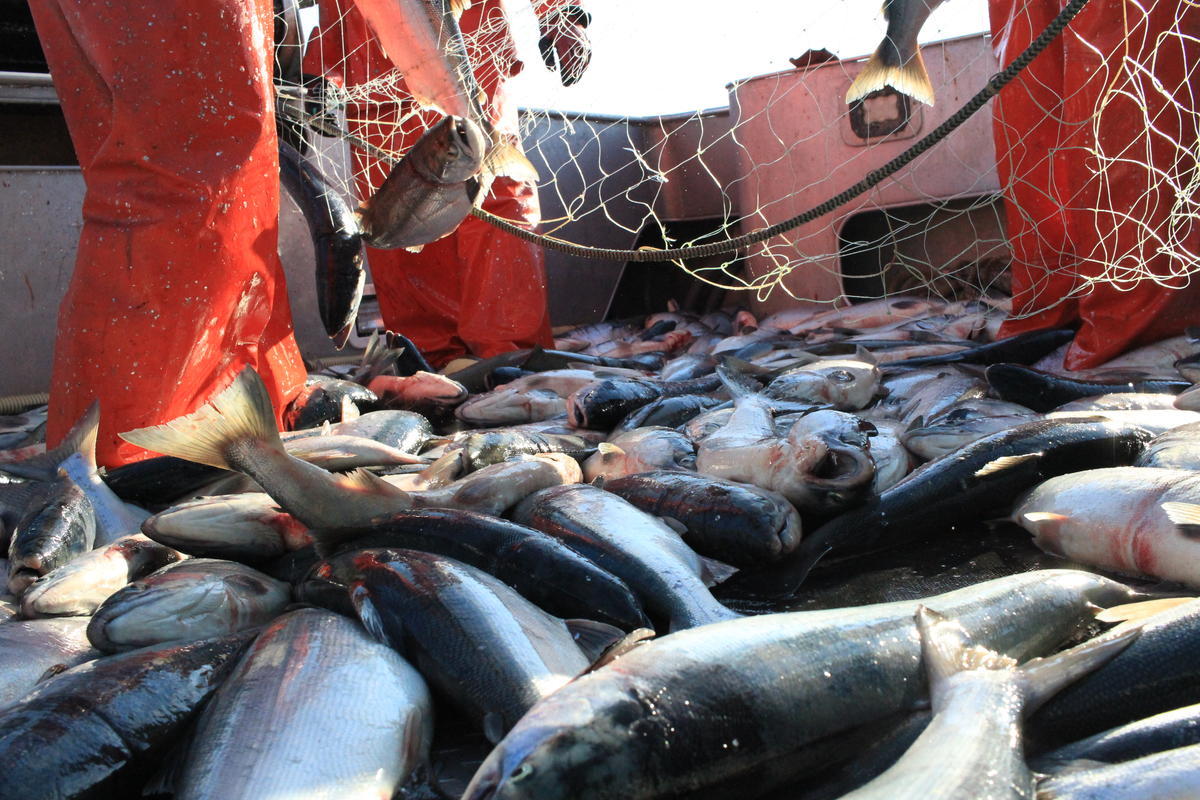
(Photo credit Sarah Grace Durrance)
The Alaska Board of Fisheries Bristol Bay Finfish meeting is two weeks away, and public comment is due by Wednesday. The state board that regulates commercial, subsistence and sport fishing in the region will convene in Dillingham at the end of November. It will take up the 47 proposed regulation changes. In October, the Naknek-Kvichak and Nushagak advisory committees met to decide which proposals they will support.
Permit stacking, subsistence and gear restrictions are hot topics on the table. Both committees made it clear that they prioritize subsistence and that they want to protect the interests of local commercial fishermen.
In that vein, they voted against extending vessel length from 32 to 42 feet.
The Naknek-Kvichak committee supports all subsistence proposals.
“Dip netting, more time to fish, having a subsistence fishery in a different location in Egegik, using hook and line. All priority fisheries in the bay. We were in support of all of them,” said committee Chair Everett Thompson.
Five proposals related to permit stacking generated some controversy at the Naknek-Kvichak AC meeting. Permit stacking refers to one fishermen owning and operating two permits.
“Even though we have voted in the prior cycle to support permit stacking, with the price and trying to keep local vested interest in the fishery, we didn’t support the permit stacking proposals,” Thompson said. “But there were some on the committee that felt it was still a pretty good way to do business in the fishery. With that said, we also felt that we should shoot down the new language in proposal 23 that would prohibit this from being a discussion in the future.”
A dual permit configuration currently allows a Bristol Bay drift gillnet vessel with two permit holders on board to operate 200 fathoms of gear. That’s 50 more fathoms than a boat with one permit holder is allowed. Proposal 23 would make it explicit in the regulations that a person couldn’t own two drift permits and operate them on the same boat. In other words, an individual couldn’t use extra gear by stacking permits.
The Naknek-Kvichak AC also submitted several proposals to protect sport fishing for trout and Chinook in the Naknek river. They voted against ending postseason aerial counting of king salmon in the Alagnak River special harvest area. Thompson says they want to continue counting to promote conservation. The Alaska Department of Fish and Game has recommended that the aerial surveys be discontinued because they say the surveys don’t provide reliable escapement estimates.
Like the Naknek-Kvichak AC, the Nushagak Advisory Committee spent much of their meeting considering subsistence proposals. The committee supported allowing subsistence fishing with drift gillnet, hook and line, and dipnet gear. It also supported extending subsistence fishing periods.
“We voted all for them,” said Nushagak AC Chair Frank Woods. “We do want to carry a message that subsistence is a priority, whether the board or sports fisheries or commercial fisheries participants agree or not. Access to resource for the local residents is a concern, but there’s a conservation concern too. That’s what the majority of the meeting time took up – where do we draw that balance and where do we draw the line?”
They also discussed permit stacking.
“We voted to keep status quo, because it’s working the way it’s supposed to work. You add the layer of dual ownership – it’s legal to own two permits, it’s illegal to operate both of them,” Woods explained.
Unlike the Naknek-Kvichak committee, the Nushagak AC voted to support Proposal 23. Seven of the eight sponsors for this proposal are fishermen who live in Dillingham. One, Susie Jenkins-Brito, serves on the Nushagak Advisory Committee. Woods says that it was important to maintain the original purpose of the dual permit.
“It allows a disenfranchised permit holder who has lost a boat or can’t operate a boat to jump aboard. The original intent of the proposal is not to own and operate one permit.”
To that end, the committee opposed several proposals that would allow a holder of two limited entry drift gillnet permits to operate more gear. They also opposed allowing a holder of two set or drift gillnet permits to stack the permits and fish them on one vessel. The committee expressed concern that that would concentrate gear in the hands of fewer fishermen and that locals would have a harder time competing.
The Bristol Bay Finfish meeting will begin November 28 in Dillingham. Public comment is due by November 14. You can find more information online atwww.adfg.alaska.gov. KDLG will be airing portions of the meeting live on KDLG.




